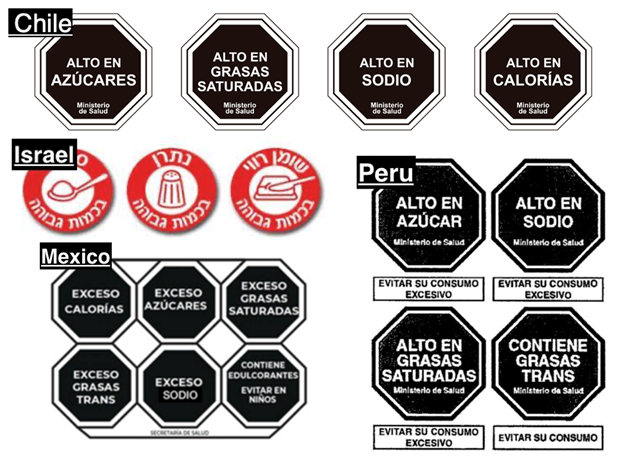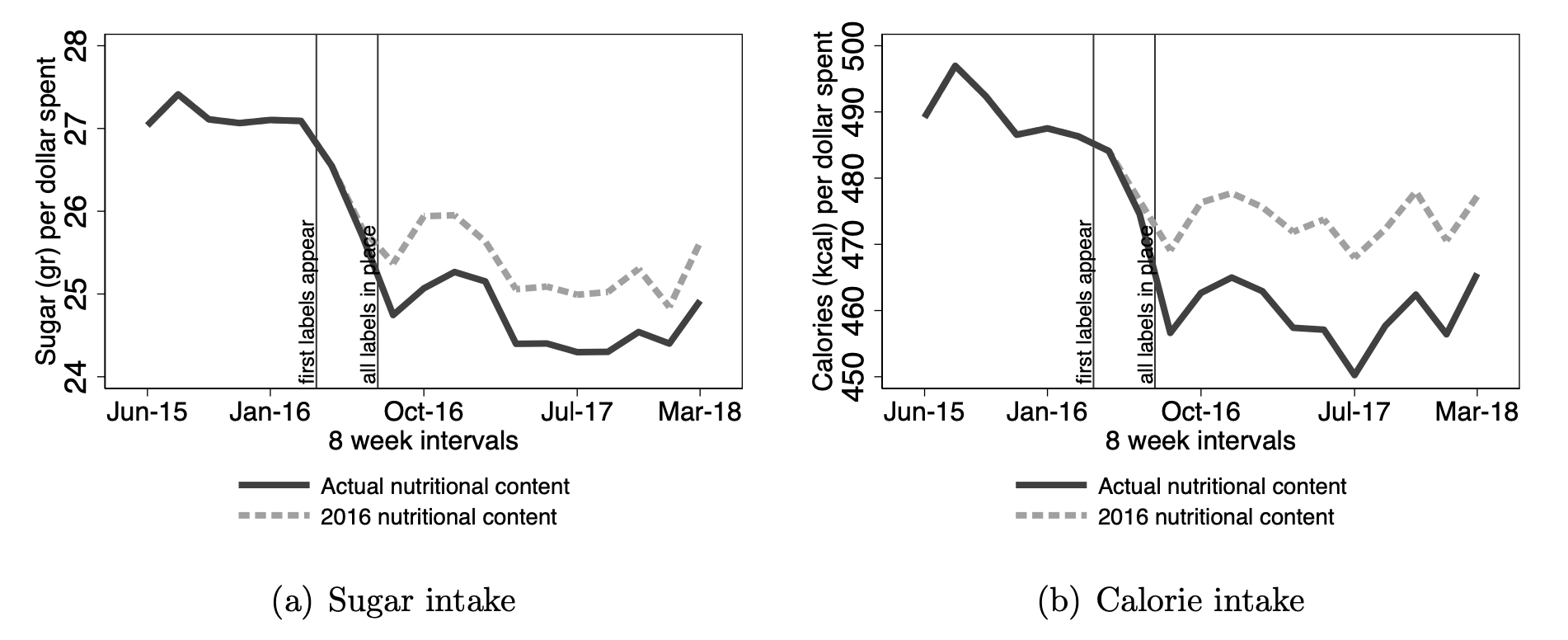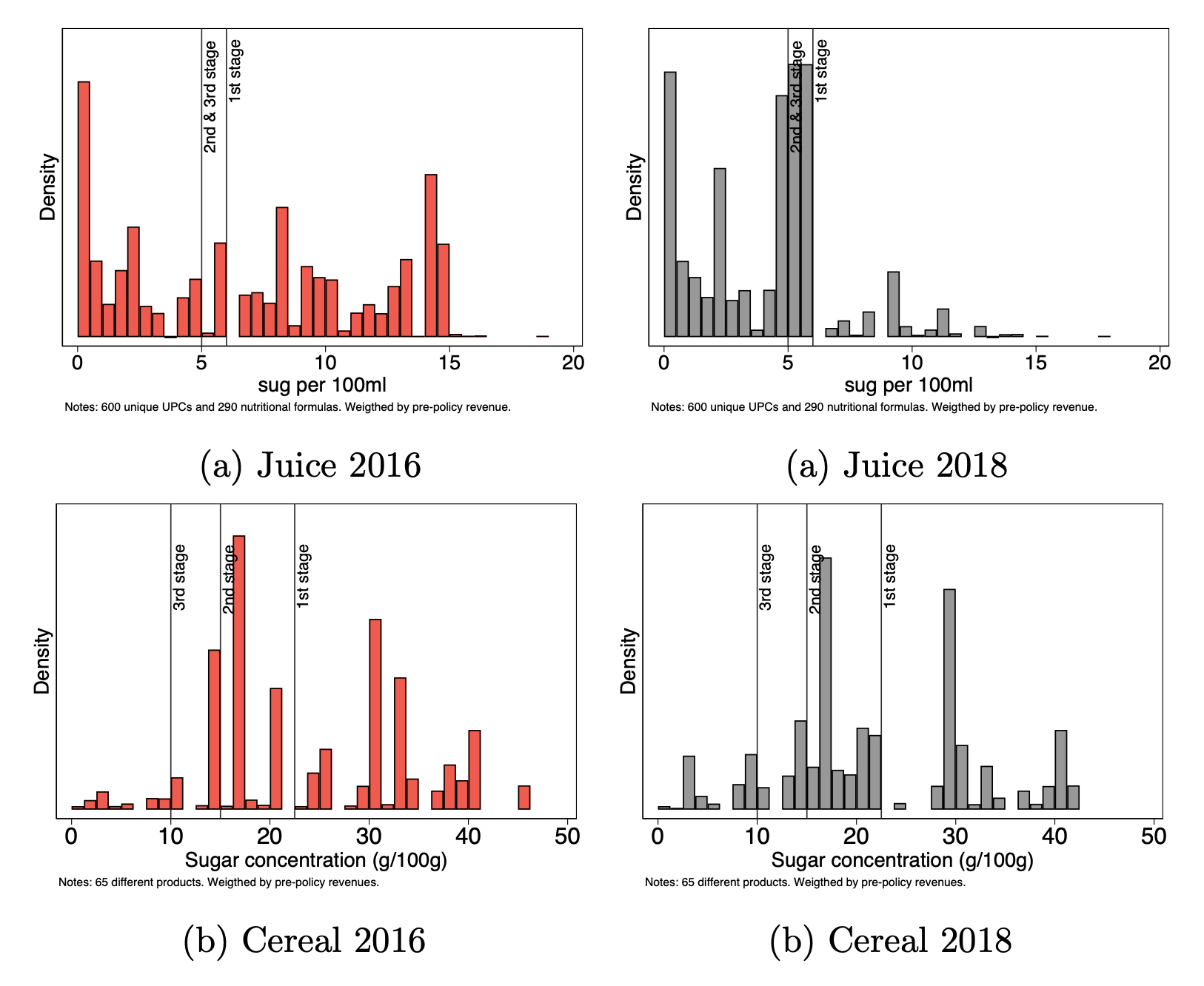On the Design of Food Labeling Policies
Front-of-package (FOP) labels are becoming increasingly popular as a policy to combat obesity. They signal to consumers when a product contains high concentrations of unhealthy nutrients, such as sugars, sodium, saturated fats, and calories. But do these policies effectively address obesity?
The average weight of American adults has increased by 20 pounds since 1990, with around 75% now considered overweight. This is not just a local concern; globally, deaths related to obesity have increased by 60% in the same period. Despite the important efforts of various organizations and governments to combat obesity, no country has succeeded in reversing the trend.
An increasingly popular policy to address obesity is to provide simplified information about products’ healthiness to consumers through mandatory front-of-package (FOP) labels. These labels are simple symbols that clearly signal to consumers when a product has a high concentration of unhealthy nutrients—such as sugars, sodium, saturated fats, and calories—to help consumers make more informed choices about what they eat. Products receive a label if their concentration of targeted critical nutrients exceeds certain thresholds.
In 2016, Chile was the first country to introduce these labels nationally, and since then, other countries, such as Argentina, Brazil, Canada, Israel, Mexico, and Peru, have adopted or are in the process of adopting warning labels, and 25 other countries are considering introducing them.

In two recent papers (see here and here), we study the impact of warning labels on nutritional intake in Chile. We partnered with Walmart-Chile, the largest supermarket chain in the country, and accessed scanner data on food purchases between May 2015 and March 2018 in all their supermarkets in the country. We matched each product to its nutritional information, and by connecting transactions to individual shoppers, we were able to compute the impact of the policy on overall nutritional intake.
Following the implementation of warning labels, we document substantive decreases in sugar and calorie intake per dollar, with 9% and 6% reductions, respectively. These effects came from a combination of demand and supply effects. Consumers changed their purchasing behavior towards products with fewer labels, and the food industry reformulated products to reduce their sugar and calorie content to avoid receiving a label.

We unpack the demand side effects on between- and within-category substitution. First, we ask whether the food labeling policy has the potential to shift consumer demand between products in different categories. For example, for breakfast, consumers could have switched from products in categories with many warning labels, such as ready-to-eat cereal or bread, to products in other categories with fewer or no warning labels, such as yogurt or fruit. However, we find that the extent to which consumers substituted between categories due to the presence of labels is negligible and cannot explain the reduction in nutritional intake we document at the beginning.
Instead, we find that most of the change in consumer purchasing occurs within food categories (for example, ready-to-eat-cereal). The introduction of the regulation led consumers to substitute products that received a label for similar products that did not receive one. A key finding is that labels are most effective when they provide new information to consumers. For example, we find that consumers only shifted their consumption from labeled to unlabeled cereals when they were uninformed about the healthiness of labeled products. In contrast, the labels did not induce large changes in demand for products that consumers had a perception that matched reality. In categories such as soft drinks, where there are already "labels" for regular vs. light or diet, we found substantially smaller effects than in cereals. The takeaway is that labels substantially influence consumption behavior when they provide valuable information and when close substitutes are available.
On the supply side, introducing labels gives companies a strong incentive to reformulate their products to just below the regulatory limits and thus avoid receiving labels. As a result, we found a significant decrease in the sugar and calorie content of products whose nutritional content was close to the regulatory thresholds. Also, labels induce more reformulation when it is less costly. For example, in categories such as yogurt or juice, firms can reformulate their products by substituting sugar with other low-cost sweeteners that mimic the products’ taste. In other categories, such as cereal or cookies, sugar serves as a bulking agent, and replacing it with low-cost sweeteners may cause them to crumble. The figure below shows the distribution of sugar content pre- and post-policy in selected categories. The stages refer to the thresholds used for each critical nutrient, and were gradually tightened over time.

Another prominent policy to combat obesity is higher taxes for products with a high sugar concentration. Our results suggest that the optimal policy is a combination of labels and taxes. The reason is that labels are a good tool for categories such as cereals or yogurts. In contrast, sugar taxes could do a better job in other categories, such as chocolates or cookies, where consumers already know that the products have high sugar content. With food labels, policymakers may have an additional powerful tool to combat obesity and help people make more informed choices about their food purchases.
Front-of-package (FOP) labels are becoming increasingly popular as a policy to combat obesity. They signal to consumers when a product contains high concentrations of unhealthy nutrients, such as sugars, sodium, saturated fats, and calories. But do these policies effectively address obesity?



